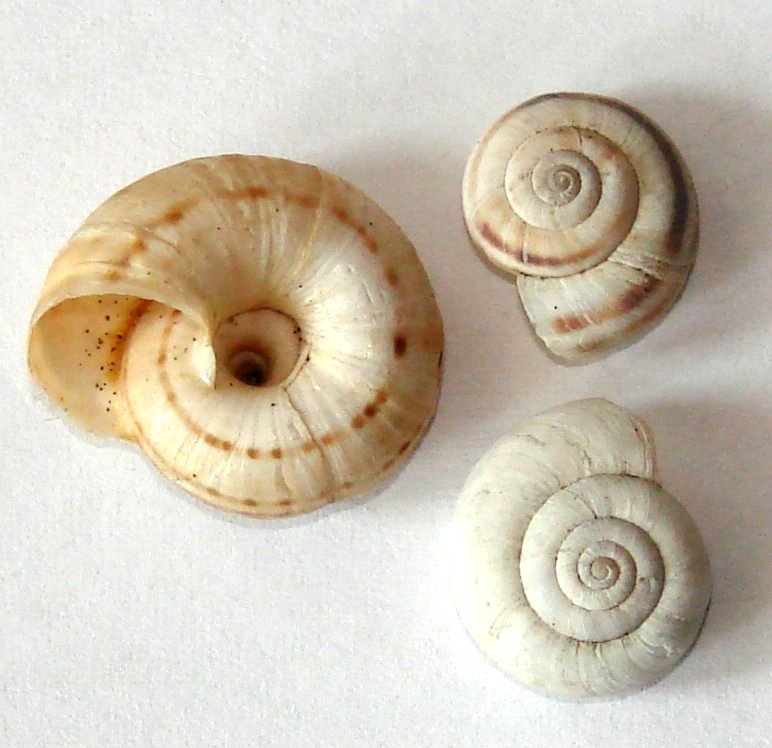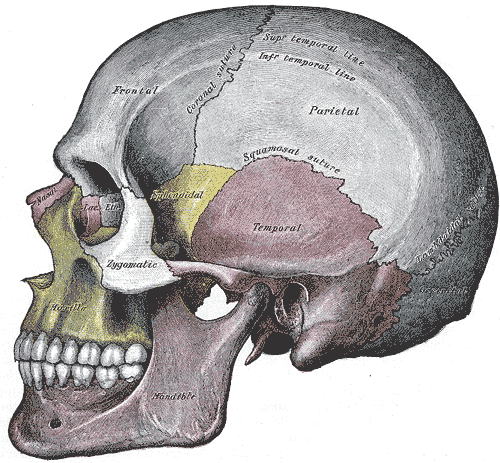|
Liostomia Clavula
''Liostomia clavula'' is a species of sea snail, a marine gastropod mollusc in the family Pyramidellidae, the pyrams and their allies.Gofas, S. (2011). ''Liostomia clavula'' (Lovén, 1846). Accessed through: World Register of Marine Species at http://www.marinespecies.org/aphia.php?p=taxdetails&id=140965 on 2011-10-26 Description The thin, white shell is transparent and polished. Its length measures 2.5 mm. The surface is microscopically longitudinally striated. The 4-5 whorls of the teleoconch are rather convex. The suture is slightly margined. The umbilicus is very small and narrow, but distinct. The columella has a barely discernible tooth or fold. |
Gastropod Shell
The gastropod shell is part of the body of a Gastropoda, gastropod or snail, a kind of mollusc. The shell is an exoskeleton, which protects from predators, mechanical damage, and dehydration, but also serves for muscle attachment and calcium storage. Some gastropods appear shell-less (slugs) but may have a remnant within the mantle, or in some cases the shell is reduced such that the body cannot be retracted within it (semi-slug). Some snails also possess an operculum that seals the opening of the shell, known as the Aperture (mollusc), aperture, which provides further protection. The study of mollusc shells is known as conchology. The biological study of gastropods, and other molluscs in general, is malacology. Shell morphology terms vary by species group. Shell layers The gastropod shell has three major layers secreted by the Mantle (mollusc), mantle. The calcareous central layer, tracum, is typically made of calcium carbonate precipitated into an organic matrix known as c ... [...More Info...] [...Related Items...] OR: [Wikipedia] [Google] [Baidu] |
Teleoconch
The gastropod shell is part of the body of a gastropod or snail, a kind of mollusc. The shell is an exoskeleton, which protects from predators, mechanical damage, and dehydration, but also serves for muscle attachment and calcium storage. Some gastropods appear shell-less ( slugs) but may have a remnant within the mantle, or in some cases the shell is reduced such that the body cannot be retracted within it (semi-slug). Some snails also possess an operculum that seals the opening of the shell, known as the aperture, which provides further protection. The study of mollusc shells is known as conchology. The biological study of gastropods, and other molluscs in general, is malacology. Shell morphology terms vary by species group. Shell layers The gastropod shell has three major layers secreted by the mantle. The calcareous central layer, tracum, is typically made of calcium carbonate precipitated into an organic matrix known as conchiolin. The outermost layer is the perio ... [...More Info...] [...Related Items...] OR: [Wikipedia] [Google] [Baidu] |
Greece
Greece,, or , romanized: ', officially the Hellenic Republic, is a country in Southeast Europe. It is situated on the southern tip of the Balkans, and is located at the crossroads of Europe, Asia, and Africa. Greece shares land borders with Albania to the northwest, North Macedonia and Bulgaria to the north, and Turkey to the northeast. The Aegean Sea lies to the east of the mainland, the Ionian Sea to the west, and the Sea of Crete and the Mediterranean Sea to the south. Greece has the longest coastline on the Mediterranean Basin, featuring thousands of islands. The country consists of nine traditional geographic regions, and has a population of approximately 10.4 million. Athens is the nation's capital and largest city, followed by Thessaloniki and Patras. Greece is considered the cradle of Western civilization, being the birthplace of democracy, Western philosophy, Western literature, historiography, political science, major scientific and mathematical p ... [...More Info...] [...Related Items...] OR: [Wikipedia] [Google] [Baidu] |
United Kingdom
The United Kingdom of Great Britain and Northern Ireland, commonly known as the United Kingdom (UK) or Britain, is a country in Europe, off the north-western coast of the European mainland, continental mainland. It comprises England, Scotland, Wales and Northern Ireland. The United Kingdom includes the island of Great Britain, the north-eastern part of the island of Ireland, and many List of islands of the United Kingdom, smaller islands within the British Isles. Northern Ireland shares Republic of Ireland–United Kingdom border, a land border with the Republic of Ireland; otherwise, the United Kingdom is surrounded by the Atlantic Ocean, the North Sea, the English Channel, the Celtic Sea and the Irish Sea. The total area of the United Kingdom is , with an estimated 2020 population of more than 67 million people. The United Kingdom has evolved from a series of annexations, unions and separations of constituent countries over several hundred years. The Treaty of Union between ... [...More Info...] [...Related Items...] OR: [Wikipedia] [Google] [Baidu] |
MarBEF Data System
MarBEF Data System (Marine Biodiversity and Ecosystem Functioning) was a project of the European Union's Network of Excellence which served as a platform to integrate and disseminate knowledge and expertise on marine biodiversity, with informative links to researchers, industry, stakeholders and the general public. The program was funded by the EU and formally ended in 2009. The data system's online Register of Resources (RoR) includes the details of over 1,000 European marine biology experts and their affiliated institutions and publications. MarBEF consisted of 94 European marine institutes and the work done was published in 415 scientific articles. While the initial MarBEF project has ended, work continues through numerous projects within the MarBEF "umbrella" including, the European Ocean Biogeographic Information System, the European Register of Marine Species, the ''European Marine Gazetteer'', and includes a related Marine Biodiversity Wiki and MarBEF Open Archive. Organ ... [...More Info...] [...Related Items...] OR: [Wikipedia] [Google] [Baidu] |
Columella (gastropod)
The columella (meaning "little column") or (in older texts) pillar is a central anatomical feature of a coiled snail shell, a gastropod shell. The columella is often only clearly visible as a structure when the shell is broken, sliced in half vertically, or viewed as an X-ray image. The columella runs from the apex of the shell to the midpoint of the undersurface of the shell, or the tip of the siphonal canal in those shells which have a siphonal canal. If a snail shell is visualized as a cone of shelly material which is wrapped around a central axis, then the columella more or less coincides spatially with the central axis of the shell. In the case of shells that have an umbilicus, the columella is a hollow structure. The columella of some groups of gastropod shells can have a number of plications or folds (the columellar fold, plaits or plicae), which are usually visible when looking to the inner lip into the aperture of the shell. These folds can be wide or narrow, promine ... [...More Info...] [...Related Items...] OR: [Wikipedia] [Google] [Baidu] |
Umbilicus (mollusc)
The umbilicus of a shell is the axially aligned, hollow cone-shaped space within the whorls of a coiled mollusc shell. The term umbilicus is often used in descriptions of gastropod shells, i.e. it is a feature present on the ventral (or under) side of many (but not all) snail shells, including some species of sea snails, land snails, and freshwater snails. The word is also applied to the depressed central area on the planispiral coiled shells of ''Nautilus'' species and fossil ammonites. (These are not gastropods, but shelled cephalopods.) In gastropods The spirally coiled whorls of gastropod shells frequently connect to each other by their inner sides, during the natural course of its formation. This results in a more or less solid central axial pillar, known as the columella. The more intimate the contact between the concave side of the whorls is, the more solid the columella becomes. On the other hand, if this connection is less intense, a hollow space inside the whorls ... [...More Info...] [...Related Items...] OR: [Wikipedia] [Google] [Baidu] |
Suture (anatomy)
In anatomy, a suture is a fairly rigid joint between two or more hard elements of an organism, with or without significant overlap of the elements. Sutures are found in the skeletons or exoskeletons of a wide range of animals, in both invertebrates and vertebrates. Sutures are found in animals with hard parts from the Cambrian period to the present day. Sutures were and are formed by several different methods, and they exist between hard parts that are made from several different materials. Vertebrate skeletons The skeletons of vertebrate animals (fish, amphibians, reptiles, birds, and mammals) are made of bone, in which the main rigid ingredient is calcium phosphate. Cranial sutures The skulls of most vertebrates consist of sets of bony plates held together by cranial sutures. These sutures are held together mainly by Sharpey's fibers which grow from each bone into the adjoining one. Sutures in the ankles of land vertebrates In the type of crurotarsal ankle which is fou ... [...More Info...] [...Related Items...] OR: [Wikipedia] [Google] [Baidu] |
Whorl (mollusc)
A whorl is a single, complete 360° revolution or turn in the spiral growth of a mollusc shell. A spiral configuration of the shell is found in numerous gastropods, but it is also found in shelled cephalopods including '' Nautilus'', '' Spirula'' and the large extinct subclass of cephalopods known as the ammonites. A spiral shell can be visualized as consisting of a long conical tube, the growth of which is coiled into an overall helical or planispiral shape, for reasons of both strength and compactness. The number of whorls which exist in an adult shell of a particular species depends on mathematical factors in the geometric growth, as described in D'Arcy Wentworth Thompson's classic 1917 book '' On Growth and Form'', and by David Raup. The main factor is how rapidly the conical tube expands (or flares-out) over time. When the rate of expansion is low, such that each subsequent whorl is not that much wider than the previous one, then the adult shell has numerous whorl ... [...More Info...] [...Related Items...] OR: [Wikipedia] [Google] [Baidu] |
Basionym
In the scientific name of organisms, basionym or basyonym means the original name on which a new name is based; the author citation of the new name should include the authors of the basionym in parentheses. The term "basionym" is used in both botany and zoology. In zoology, alternate terms such as original combination or protonym are sometimes used instead. Bacteriology uses a similar term, basonym, spelled without an ''i''. Although "basionym" and "protonym" are often used interchangeably, they have slightly different technical definitions. A basionym is the ''correct'' spelling of the original name (according to the applicable nomenclature rules), while a protonym is the ''original'' spelling of the original name. These are typically the same, but in rare cases may differ. Use in botany The term "basionym" is used in botany only for the circumstances where a previous name exists with a useful description, and the ''International Code of Nomenclature for algae, fungi, and plants ... [...More Info...] [...Related Items...] OR: [Wikipedia] [Google] [Baidu] |
World Register Of Marine Species
The World Register of Marine Species (WoRMS) is a taxonomic database that aims to provide an authoritative and comprehensive list of names of marine organisms. Content The content of the registry is edited and maintained by scientific specialists on each group of organism. These taxonomists control the quality of the information, which is gathered from the primary scientific literature as well as from some external regional and taxon-specific databases. WoRMS maintains valid names of all marine organisms, but also provides information on synonyms and invalid names. It is an ongoing task to maintain the registry, since new species are constantly being discovered and described by scientists; in addition, the nomenclature and taxonomy of existing species is often corrected or changed as new research is constantly being published. Subsets of WoRMS content are made available, and can have separate badging and their own home/launch pages, as "subregisters", such as the ''World List ... [...More Info...] [...Related Items...] OR: [Wikipedia] [Google] [Baidu] |




